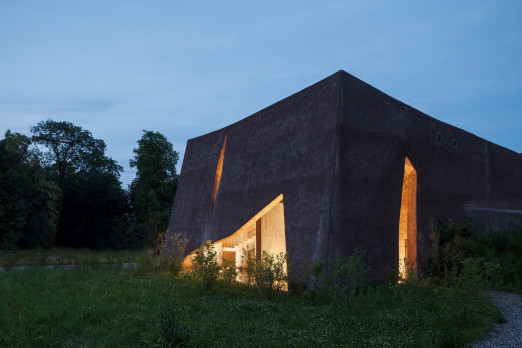Situated in Aqaba, Jordan, The Ayla Golf Club resembles the natural dunescapes and mountainous topography of the Jordanian desert.
The curvaceous design forms the core of the Aylas Oasis resort in Aqaba and looks as though it has formed naturally as it effortlessly blends into the copper-coloured landscape.
At 13,000 square feet, the Golf Club is part of the first phase of a 17 square mile leisure development which is currently under construction in Aqaba.
Designed by Oppenheim Architecture, the building is constructed with shotcrete — a type of concrete which is sprayed into its form through a hose (which is often used to create curved surfaces). Here, Oppenheim Architecture mixed the concrete with an orange pigment, transforming the dull grey material into one which fluidly merges into the desert landscape.
The concrete is shaped into huge shells which drape over the construction, enveloping the exterior and interior walls under one surface.
The shotcrete shells blend in with the sand-like dunes, and from afar, appear like extensions to the surrounding environment. Sunlight filters into the building via perforated corten steel screens, similar to traditional Arabic Mashrabiya — a window with carved wood latticework, which is used to allow natural light to enter space without compromising privacy.
The project was constructed as part of a knowledge exchange programme between Oppenheim Architecture and the local workforce.
During the building’s construction, Shotcrete pouring techniques were taught to workers so that they could learn specialized construction skills.
In addition, a local artist applied a traditional pigmentation technique to the interior architecture of the building, creating an unadorned aesthetic which enhances the connection between the architecture and sculptural sandy environment it sits within.
To learn more about the project, click here.



